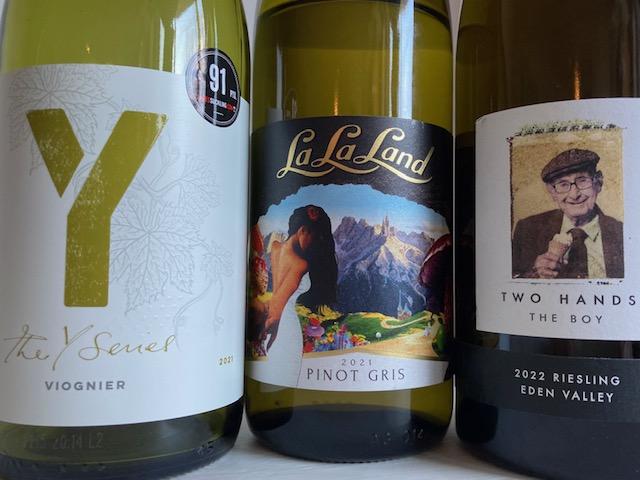People often ask me, What’s your favourite wine? It’s a baffling question with the flood of choices that come to mind. Knowing, however, that my enquirers probably haven’t got all day, I usually just respond with The last good one I had.
I tend to get wrapped up in a region or country for a time, and as I’ve recently found myself wading through Australia (a nod to my last article), I thought I’d carry a similar springtime tune here with some lovely Aussie whites of the same caliber for you to enjoy as the weather warms up.
With Riesling, its Vanna White; Chardonnay, its oarlock; among other national specialties as well as the ‘alternative’ newcomers, Australia offers us some of the world’s highly desired white wines.
My last piece drew on the comparisons between the more cream-and-mantle- and the rather overshadowed expressions of Australia’s smaller, independently-owned businesses, whose personas are bolstered upon the classics as well as the openness to experimentation.
And that vitality of pure human energy is collectively rearing upon the basis of regionality, increasingly spotlighting more site specific bottlings; Australia’s geologists’ dream of soils – each disclosing their authorship and now the industry’s foremost propagators; and of course, the nectarous wines of the plots of a good many old vines – thick, gnarly, somewhat Daguerrean fixtures of days gone by.
“I went in, I knew not where”
Vines landed on the nation with the First Fleet, a band of 850 convicts and their superiors, in 1788. By the mid 1800’s, many of the, to us, recognizable European vines had been brought over – some of those cuttings yet firmly rooted and fruitful.
Thriving since 1838, one of such is Riesling, a Germanic vine held in high regard within the finer wine realm. Loved for frankly disclosing the soil in which it lies and further admired for the delicateness of its potential: light, floral and, in Australia, limey, winemakers around the globe attempt to vinify it to a style that would impress the most discerning of German, or Alsatian, wine drinkers. But it’s a task more frequently attempted than compassed. Oz, however, has been widely commended for producing wonderful wines therewith – and that’s despite a nation where a lack of water is the insoluble problem.
Thanks to relative altitude and swift breezes, Eden Valley is one particular area known for Rieslings which do not allay their varietal centering-effect on the imbiber. And the prooftext that older vines make better wines lies with Two Hands’ The Boy Riesling 2022 (listed below): borne of 108 year old vines, it’s bone dry with “sweet” lime and juicy green apple notes, and laced with an endless complexity, peaking at a somewhat resinous combo of camphor, smoke and eucalyptus. Its delicacy and penetrating acidity enliven its relatively generous body and pithy texture. Try it paired with firm white fish topped with gremolata.
Pinot Grigio
Pinot Gris, Pinot Grigio: same grape, two different styles. Gris, Alsatian and intentionally made to be unctuous and relatively rich; Grigio, light and zesty, a style made hugely popular, internationally, by Italy’s Veneto region whence an enormous amount of half-fabulous examples flood the market.
But with an air of Italianate brilliance and temper, La la land Pinot Gris’ label (listed below) belies its named style being more Grigio-aligned: light but not flimsy featuring lively green apple, pear and soft hints of peach. It’s both citrusy and mouthwateringly saline. A subtle fleshiness adds some substance, allowing it one toe into the Gris camp, and by my measure, ‘alternative’ status over ‘international’ variety rank. Ideal with sushi or deep-fried calamari.
Viognier
Potentially highly fragrant (think honeysuckle and canned peaches), Viognier is a Rhône Valley local turned globetrotter with plantings now existing around the world.
Yalumba, Oz’ oldest family-owned winery, has become something of an icon for the grape. Out of a range of Viogners in their portfolio, The Y Series has become a go-to white among many wine lovers for its delicate vernal expression of spring flowers and vegetation. This, along with peachy undertones and mouth-coating texture, are kept in check by crisp acidity. A nice dish of orecchiette with rapini and sausage would surely complement.
Chardonnay
Vastly exported and often clichéd for the many rich, off-dry expressions with vague tropical fruit flavours, the wines of Oz’s flagship white grape, Chardonnay, need no entry except to clear the air of this very perception.
Like the Russian nesting dolls, wines often become more defined, “cuter”, as we go further into the subs of sub-regions, and surprisingly taut, terroir-expressive Aussie Chard’s are not irregularly made – varying in style from lean and crisp to more full-bodied and vanilla-kissed.
Keep an eye out for those of Margaret River, a small area desolately located at the nation’s far western tip. They could give neo-white Burgundy a run for its money.
I’ve provided several options as quantities tend to be limited within the more rural areas of The Review’s readers. But, of course, there is always online ordering.
Tyrrell’s Hunter Valley Chardonnay 2019, $24.95 LCBO 22985
Wakefield Estate Label Chardonnay 2021, $17.95 LCBO 711556
Yalumba Y Series Viognier 2021, $14.50 LCBO 470062, also available at $15.50 SAQ 11133811
Two Hands Wines ‘The Boy’ Riesling Eden Valley 2022, $30.75 SAQ 12540557
La La Land Pinot Gris Victoria 2021, $17.70 SAQ 13503758


